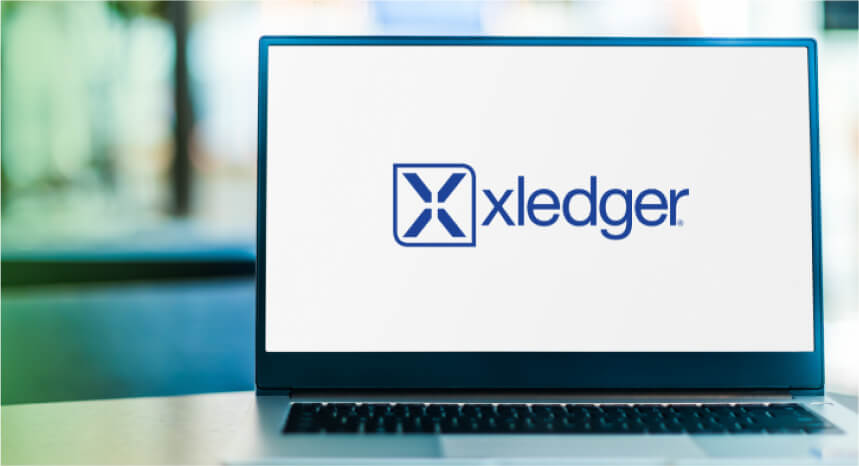Blogs
About Microsoft Great Plains Retiring

Lately, there’s been a lot of talk surrounding Microsoft Dynamics GP — often called Microsoft Great Plains, Microsoft Dynamics Great Plains, Microsoft GP, or Dynamics GP — possibly nearing its end-of-life stage. Some say Microsoft is ending support for Dynamics GP in 2025, others say 2026 or 2028, and others say that the rumors aren’t true and it isn’t ending at all.
The situation is complex, ongoing, and requires more nuance than the all-or-nothing portrayal many have seen across the web recently. We’ll go over exactly what is happening with Microsoft Dynamics GP, how users will be affected, our recommendation, and how to assess what ERP is right for your business if and when you decide to move on from Dynamics GP. Let’s start with the basics and work our way up.
What Is Microsoft’s Great Plains?
Microsoft Dynamics GP is a Microsoft-owned accounting software aimed primarily at SMBs (small to midsized businesses), including many service businesses and nonprofits, to help them manage their business finances. The reason people often refer to it as Microsoft Great Plains is because Great Plains is what the GP stood for originally. In 2001, Microsoft purchased the software from Great Plains Software, the North Dakoda firm that developed it.
Today, Microsoft Dynamics GP has many applications, integrations, and add-on modules. The native applications include:
- Financial Management
- Human Resources Management
- Manufacturing Planning
- Supply Chain Management
- Field Service
- Business Intelligence
- Collaboration
- Compliance
- IT management
Some would classify Microsoft Dynamics GP as a basic ERP (Enterprise Resource Management) while others would say it doesn’t quite qualify as an ERP at all. The reason many would make this distinction is due to Microsoft Dynamics GP’s lack of proper analytics, not being cloud-based, and lacking other typical features you’d expect to find in an ERP.
Is Microsoft Great Plains Retiring?
As mentioned earlier, the answer is more complex than a simple yes or no. It doesn’t appear that any of the sites are lying. Rather, it seems that Microsoft’s naming convention and wording in their announcements caused this issue. Microsoft has released different versions of Dynamics GP in various years. They were simply called Microsoft Dynamics GP then the year of the release (i.e., Microsoft Dynamics GP 2015).
In 2019, however, they changed this and dropped the year. The reason for that seems to be the change in support for the product. Microsoft Dynamics GP versions before 2019 were all on what is called the Microsoft Fixed Lifecycle Policy. This basically means support for the product eventually ends on a fixed date. Starting in 2019, Microsoft Dynamics GP was moved to the Modern Lifecycle Policy, meaning support and updates continue each year.
So, instead of releasing new versions set to expire on a set date, they now simply update the continuous product known as Microsoft Dynamics GP and continue to offer support for it. For the products on the Fixed Lifecycle (between 2010 and 2018), support will end on the end date specified for that version. Here’s a list of some of the versions and the end dates for their extended support.
- Microsoft Dynamics GP 2010: October 13, 2020
- Microsoft Dynamics GP 2013: April 11, 2023
- Microsoft Dynamics GP 2015: April 8, 2025
- Microsoft Dynamics GP 2016: July 14, 2026
- Microsoft Dynamics GP 2018: January 11, 2028
Downloading a yearly update ensures you never have to worry about your support ending.
Why Should You Switch?
Even Microsoft Dynamics GP users who are using the version of the Modern Lifecycle Policy that won’t be expiring soon may have been encouraged to switch ERP systems. Microsoft is encouraging users to move to Microsoft Dynamics BC (Business Central), formally Microsoft NAV. It’s a newer product that works on the cloud. However, this might be the perfect time for businesses using Microsoft Dynamics GP to consider their options.
There are plenty of other options available, and it’s important to assess how well Microsoft Dynamics GP is working for your business. Unless you’re a pretty new user, your business needs have likely changed since adopting the system. Also, you’re in a better position now to know how it works for you. It couldn’t hurt to consider your options.
Why Not Just Move to Microsoft Business Central?
Many businesses are hearing this news and considering whether to switch to Microsoft Dynamics BC or another ERP, entirely lean towards Microsoft Dynamics BC to keep things simple. They assume that moving to another Microsoft product means they just have to deal with a simple license change and be done with it.
Unfortunately, that’s not the case. Switching from Microsoft Dynamics GP to Microsoft Dynamics BC would still require the migration of all your business data, and the implementation process will be similar to that of moving to any other ERP outside of the Microsoft suite of products.
If staying with the same company doesn’t bring this added convenience, then why not really assess your needs and consider alternatives before making a decision? Here are some questions you might want to ask before you commit to simply moving on to the next Microsoft solution available.
1. Is It Cloud-Based?
Cloud-based software is the gold standard for a reason. Cloud storage is a must, especially for an ERP, where the point is to keep all your business data and resources in one place. Business data can eat up a lot of space on your hard drive and slow it down. Cloud-based software is also faster, more secure, easily accessible from anywhere, and more flexible. There’s really no downside.
Unlike Microsoft Dynamics GP, Microsoft Dynamics BC can be used on the cloud. However, it wasn’t built for the cloud. It’s just another Microsoft legacy system that wasn’t made for the kind of business systems needed today. This may seem like a distinction without a difference, but that couldn’t be further from the truth.
True cloud software has many benefits over the alternative. A true cloud system like Xledger saves time makes your processes more efficient, limits waste, lowers costs and eliminates as much as 75% of your team’s manual labor while speeding up audits by up to 70%.
Upgrading to Microsoft Dynamics BC would definitely be an improvement over GP. However, it still leaves you far behind modern-day cloud-built software. This is the perfect opportunity for smaller businesses and nonprofits to not only catch up but leap-frog to the forefront of the technological landscape.
Choosing a system built for the cloud that includes all the cutting-edge tools and performance can simplify your job and help you work better and faster. The money and time you’ll save will make the switch more than worth your time. Switching to a cloud-based ERP, like Xledger, that’s purpose-built for nonprofits can be exactly what you need to work smarter, not harder.
2. Is It Flexible?
If the last couple of years have taught us anything, it’s that flexibility, agility, and scalability are the keys to surviving anything. It helps to have lightning-fast software that makes creating new business units a breeze with the fastest implementation available. It’s just as important that as you grow, your software grows with you. The right ERP easily adapts to the increase in data and processes you need to function at every stage.
Having an ERP that’s flexible makes it possible to work from anywhere, prevents the need to spend excess time as you expand, and saves you from the long list of add-ons and third-party apps that Microsoft products all too often require. The right ERP works for your business and conforms to your needs. You shouldn’t have to work around its shortcomings or spend your time finding the right outside solutions to make up for what it lacks.
Xledger is a single, unified solution designed to be everything you need. It has tons of core features made to grow with you, help your business be more efficient, manage your finances more effectively, and spend less time on manual, repetitive administrative tasks. It’s the perfect way for nonprofits to run a leaner, more impactful operation. With tools designed specifically for the needs of nonprofits, like donor management for improved fundraising, goals like raising more money and increasing donor retention are at your fingertips. Plus, we have standard and custom integrations to connect you to everything you need.
3. Does It Have a Comprehensive Data & Analytics Dashboard?
Microsoft Great Plains doesn’t have anything close to the kind of data analytics a business needs. Especially for SMBs, service-based businesses, and nonprofits, the ability to see data sets from every angle is crucial. Without a truly 360° view of your data, you miss out on critical insights that could guide your most important decisions in the right direction.
Xledger has the reporting and analytics features needed to provide powerful business intelligence that could make or break your budget. Our system gives you access to hundreds of pre-defined reports and the ability to create your own for truly custom insights.
Bottom Line
When it comes down to it, you don’t need another outdated solution that’s slightly better than what you have but won’t be nearly what you need. The constant need to upgrade, make marginal improvements and patch gaps in functionality is a waste of time. Even worse, it’s a real opportunity cost. You have to consider what that option will mean missing out on.
You may save a little time and money up front by going with the bare minimum solution you already know. However, the capabilities you won’t have, the time and money that near-obsolete software can’t save you, the benefits it won’t provide, and the added hassle you’ll have to endure are the real costs of staying with substandard software. Don’t get left behind because your business doesn’t have the right tools. Switch to Xledger and see what the view looks like from the forefront of your industry. Contact us today to learn how to get started.

